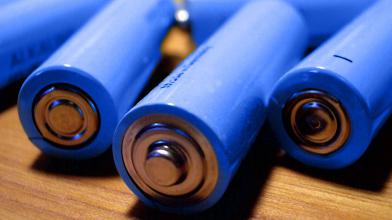There are many financial, logistical, and legal factors to take into account when choosing your product’s manufacturing location. The first country that comes to mind for electronic product assembly is often China. Rightfully so, as China has been the world’s electronics manufacturing hub for decades.
However, many other countries also offer manufacturing capabilities to support electronics as well, including Mexico. Mexico is best known for textile and automotive manufacturing. Over the last decade, Mexico has expanded manufacturing support for electronics and medical devices. With this rise in electronics manufacturing power, Mexico has become a viable alternative for making products that have commonly been built in China.
With two great options, how do you choose your product’s manufacturing location? Let’s compare manufacturing electronics in China vs. Mexico.
Benefits of Electronics Manufacturing in China
Benefit #1: Large Skilled Workforce
The first advantage of manufacturing in China is its large skilled workforce. China’s workforce is the largest in the world and has been operating in the “world’s factory” for decades. China also has a large quantity of highly skilled experts in engineering and manufacturing. This means that when you are ready to scale quickly, China has the workforce ready to scale with you.
Benefit #2: Low Manufacturing Costs
Likely the best-known benefit of manufacturing in China is its low manufacturing costs. Traditionally low (yet rising) labor costs, a broad and deep supply base, and a high level of competition for business has created a highly networked and low-cost manufacturing environment. When brands are cost-conscious and want to maximize their profits, lower manufacturing costs is a primary area of focus that China manufacturers help serve.
Benefit #3: Strong Component Sourcing and Supply Chain
Another benefit to manufacturing in China is strong component sourcing and supply chains. As China grew to dominate electronics manufacturing over the decades, an extensive base of component and material suppliers established themselves near the factories to support their growth. China’s supply chain is one of the strongest competitive advantages it has over other regions of the world.
Benefits of Electronics Manufacturing in Mexico
Benefit #1: Proximity to the United States
The first benefit of manufacturing in Mexico is its proximity to the United States. Many North American businesses consider nearshoring to be an essential part of their supply chain strategy. Connection via a land border (rather than an ocean) allows for faster transportation of your end product from the production facility to your distribution warehouse. The geographic closeness of Mexico to businesses in the USA and Canada also means it is easier to visit your production facility given the shorter travel times and minimal time zone differences.
Benefit #2: Favorable Trade Agreements
A second benefit of manufacturing in Mexico is the favorable trade agreements. These agreements mean that components used for manufacturing your product can be imported into Mexico duty-free and are exempt from value-added tax (VAT). Mexico is also part of the USMCA, which promotes transparent customs procedures. Finally, there are no additional tariffs for importing electronic products from Mexico into the USA.
Benefit #3: New Possibilities
Lastly, manufacturing in Mexico presents an array of new possibilities. With a growing network of manufacturing facilities, Mexico is buzzing with innovation. Government incentives such as tax benefits, grants, and streamlined regulations promise to further fuel this wave of growth. Mexico is quickly becoming a hub of emerging tech opportunities.
To learn more in detail about each of these benefits, check out our article: Advantages and Disadvantages to Manufacturing in Mexico.
Cost of Manufacturing in Mexico vs. China
When selling a product, costs are an important factor to keep top-of-mind. You need to set up your supply chain to maximize profitability for your business. This means having a holistic view of all costs associated with your product: bill of materials, manufacturing costs, transportation, taxes, long-term warehousing, and more. Learn more about factors that affect your production costs.
Example Pricing of a Product Made in Mexico vs. a Product Made in China
Below is a table that compares the estimated production and logistics costs to manufacture in China vs. Mexico. This example features a small (less than 8” by 8” by 8”) electronic product that will be imported into the USA, with a bill of materials (BOM) cost of $50.
| Line Item | Product Made in Mexico | Product Made in China |
| Bill of Materials (BOM) | $50 | $50 |
| Inbound Logistics for Materials* | + 5% of BOM | 1% of BOM |
| Landed BOM (BOM + Inbound Logistics) |
$52.50 | $50.50 |
| Ex Works (EXW) | + 55% of Landed BOM | + 35% of Landed BOM |
| Finished Good on Factory Floor | $81.38 | $68.18 |
| Outbound Logistics for Product** | + 2% of Finished Good | + 5% of Finished Good |
| U.S. Tariff Import Fee | Not Applicable | + 25% of Finished Good |
| Total Product Cost | $83 | $88.63 |
| Landed Price over BOM | 66% | 77% |
*Inbound logistics for Materials includes transportation fees, customs, duties, taxes, tariffs, insurance, currency conversion, crating, handling and payment fees
** Outbound Logistics for Product includes freight, duty, insurance, and warehousing
Is It Cheaper to Manufacture in Mexico or China?
Based on the above example, costs for a finished product in Mexico are 19% higher than the same product in China. However, when looking at the the landed price, products made in Mexico may come out to be cheaper in total cost.
The pricing table is just an example and is meant to illuminate that there are other costs beyond BOM to calculate your product’s final price. Your exact pricing markups will vary based on the terms, agreements, and transportation type for your product.
How to Choose between China vs. Mexico Manufacturing
When you are selecting your manufacturing location, regardless if it’s Mexico or China, there are other factors beyond cost to assess. It’s up to you to determine what priorities are important to your business. Here are a few additional key areas to evaluate when choosing which country to manufacture in:
Lead Times
Lead time is the amount of time to receive materials or your final product. Lead times can affect inventory management, order fulfillment, and delivery dates. Assess your timelines for maintaining certain material levels or final product to have an efficient flow of goods for your business and customer demands.
Ease of Visiting Your Production Facility
Due diligence is important to ensure your production facility is maintaining the regulations and standards you have agreed upon. Visiting the factory also helps build the relationship with your manufacturing partner and allows for faster resolution if issues arise. Evaluate your traveling logistics to visit your manufacturing location from your own home base.
Economic and Political Risk Tolerance
Doing business in another country leaves you more vulnerable to changing policies or laws that can affect your operations. Weigh how much risk you are willing to take on with a potentially changing economic or political landscape.
Regulatory Compliance for Your Product
Adherence to safety standards and certifications is crucial for avoiding legal issues and ensuring the marketability of your product. In addition to location considerations, your manufacturer should align with your testing and certification requirements. This is a further detail to consider when choosing the right manufacturing partner for your business.
Supply Chain Resilience Requirements
Determine potential vulnerabilities to your supply chain and consider what your alternatives would be in the case of a disruption. China’s extensive supplier networks make it an ideal location for scalability as a whole, but doing business overseas can mean longer lead times. Mexico’s proximity to the U.S. provides strategic advantages for ensuring shorter lead times and logistics resilience, but the country’s domestic supply chains are not as mature as China’s.
Mexico vs. China Manufacturing: The Choice is Yours
Deciding where to manufacture your product requires a careful assessment of critical factors that can impact your business operations. Cost considerations are certainly crucial—with China offering lower labor costs but higher tariffs and shipping expenses, versus Mexico’s competitive labor rates and lower transportation costs for North American businesses. Location also plays a significant role. Mexico’s participation in trade agreements like USMCA offers streamlined access to North American markets, while China’s established infrastructure can better support large-scale production in some cases.
Ultimately, the choice depends on your priorities: cost efficiency, speed-to-market, supply chain resilience, and operational flexibility. Carefully weighing these factors will help you make a strategic decision that aligns with your company’s goals.


